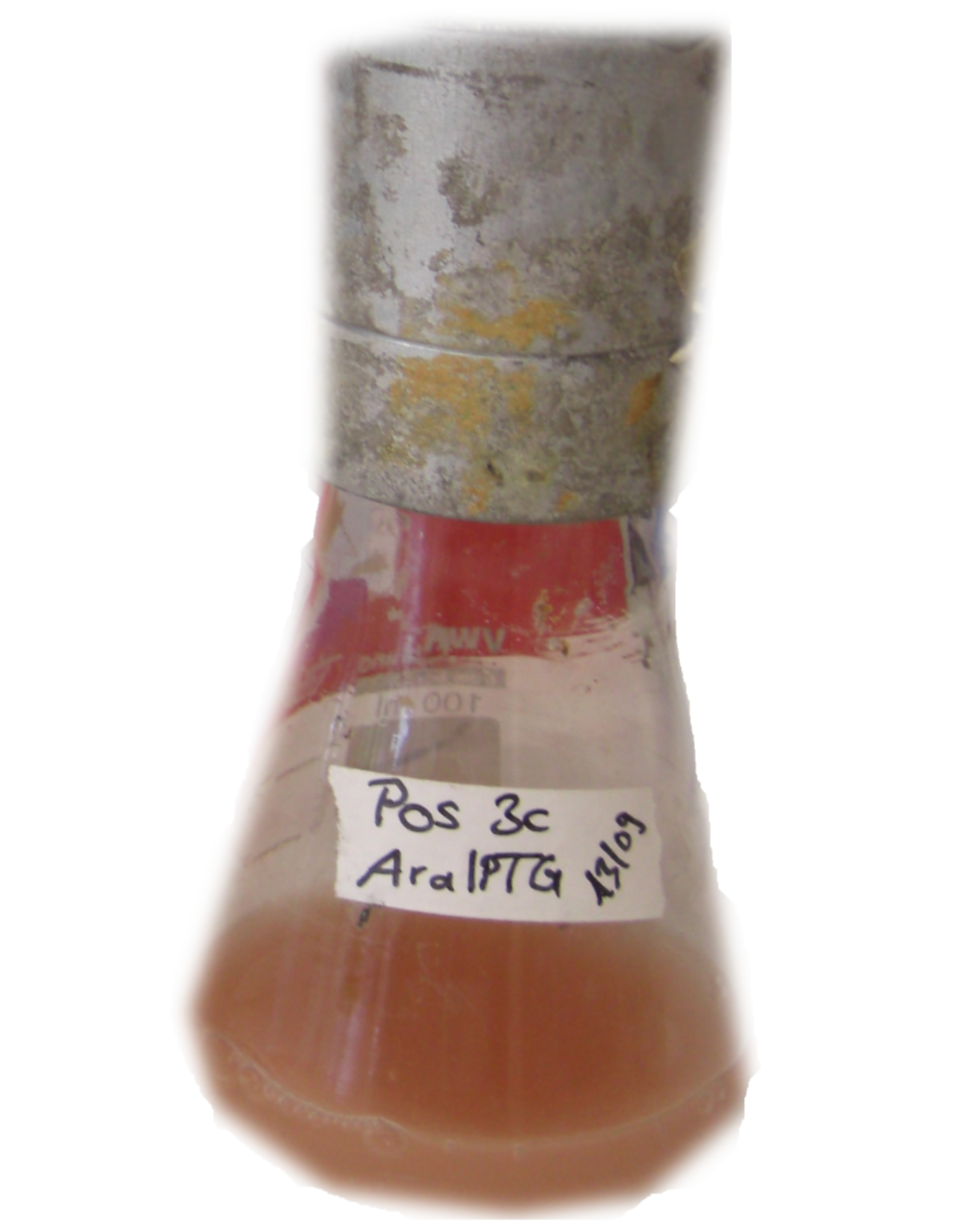Team:TU Munich/Parts
From 2010.igem.org
|
||||||||
|
|
New PartsSingle PartsMalachitegreen-Binding Aptamer - BBa_K494000
The malachitegreen-binding aptamer has been successfully used in screening systems being both robust and easy to produce. Aptamers provide specifities in the range of antibodies and can be evolved to target small molecules and proteins. [1] PlasmidsIn general we want to provide a new principle of gene regulation which can be further developed, tested and optimizted by everybody. Therefore we focus on providing the parts needed for verification and testing of new individual switches. We provide a plasmid which can be used for further cloning, a positive control to test the general functionality and the constructs we characterized for comparison. BBa_K494001We designed a new screening systems based on the non-functional pSB1A10 plasmid. We improved its features for ‘’in vivo’’ characterization of PoPS devices using fluorescent reporters . The plasmid still contains the Pbad arabinose-inducible induction system as a tunable input and eGFP as an internal standard for induction. However, we altered the reporter protein to mCherry. Furthermore we adjusted the BioBrick cloning site to allow cloning of additional parts independent from the Input/Output measurement. This screening plasmid is designed to be used with a second Arabinose inducible promoter <partinfo>I13453</partinfo> which is not included in this part. The improved screening system is optimized for the evaluation of PoPS devices in fluorescence measurements. RFP which was known to contain an RNase restriction site was replaced by mCherry which combines good expression yield, short maturation times and an acceptable and well-characterized quantum yield. A unique challenge for the characterization of our switches is the expression of a corresponding signal independent of the input/output measurement. Thus, we moved the BioBrick cloning site resulting in the fluorescent reporter being inside the cloning site and giving the possibility to clone independent parts behind the reporter protein. To fully function our screening plasmid need the arabinose inducible promoter BBa_I13453 in front of the PoPS device to screen. Using a second arabinose inducible promoter, we were able to keep eGFP as an internal standard for the tunable input via the Pbad arabinose-inducible induction system. The two identical promoters ensure the same rate of induction for eGFP and the tested PoPS-device. Thus, obtaining comparable screening results is easy. Unfortunately, this design implicates a minor disadvantage. Two cloning steps are needed to gain an functional construct for testing any PoPS device. CloseScreening system: Positive Control BBa_K494002Here we present a ready to use composite part consisting of our screening system pSB1A10mod <partinfo>BBa_K494001</partinfo>, the PBad Promotor <partinfo>BBa_I13453</partinfo> and the reporter protein mCherry <partinfo>BBa_J06702</partinfo> including RBS and double Terminator <partinfo>BBa_B0015</partinfo>. This part belongs to the screening system and is intended as positive control. BBa_K494003With His-Term/Signal BBa_K494004With Trp-Term/Signal FalsificationpSB1A10
References[1] Babendure, J.R., S.R. Adams, and R.Y. Tsien, Aptamers switch on fluorescence of triphenylmethane dyes. J. Am. Chem. Soc, 2003. 125(48): p. 14716-14717. [2] Stead, S.L., et al., An RNA-Aptamer-Based Assay for the Detection and Analysis of Malachite Green and Leucomalachite Green Residues in Fish Tissue. Analytical chemistry. 82(7): p. 2652-2660. [3] Stojanovic, M.N. and D.M. Kolpashchikov, Modular aptameric sensors. J. Am. Chem. Soc, 2004. 126(30): p. 9266-9270. [4] https://2008.igem.org/Team:Heidelberg [5] Smolke and so on.... [6] http://en.wikipedia.org/wiki/Logic_gate#Symbols |
|||||||
 "
"












